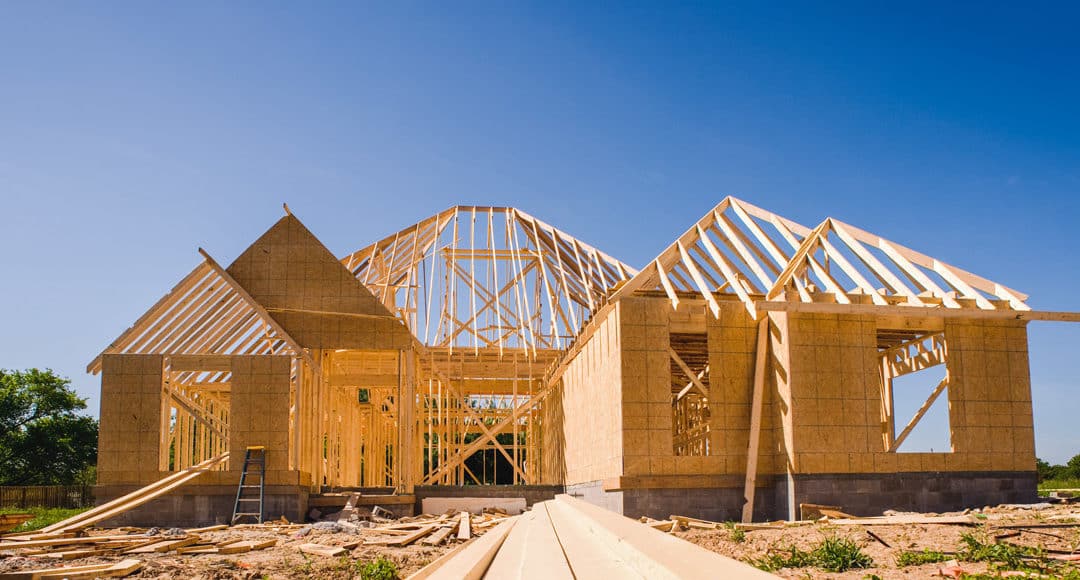Contractors, homeowners and economists are all closing out 2022 wondering: Will lumber prices go down in 2023?
It’s a tricky question to which few can offer a solid answer. Many factors contribute to next year’s lumber prices, including basics like supply and demand, and more high-level elements like the Federal Reserve’s fight against inflation. In this blog, we’ll take a look at the current state of lumber in the U.S. and dive into some of the driving forces behind lumber prices going down in 2023.
Have lumber prices gone down since 2020?
The industry suffered a major blow during the COVID-19 pandemic of 2020, the effects of which were felt well into 2021 and 2022. The pandemic-related labor and materials shortages sent lumber prices skyrocketing until the Federal Reserve’s move to increase interest rates halted the housing market and struck down the demand for lumber in early 2022. Lumber prices fell in advance of this significant slow-down, with MarketWatch reporting in late September 2022 that prices had fallen by over 60%. Our experts at Simonson say current lumber prices (as of December 2022) are “very low;” possibly the lowest the market will see for some time.
But in 2023, according to Forbes, economists and industry experts are anticipating a housing market recovery, which will generate a renewed demand for lumber.

So are lumber prices going down in 2023?
Maybe. Renewed demand is encouraging, but it is only one part of the equation.
One significant unknown in predictions for next year’s lumber prices are the actions, or lack thereof, of the Federal Reserve. It is possible that the Fed may become over-enthusiastic in its anti-inflation efforts and raise interest rates higher than is necessary to combat inflation. Should that happen, the economy may be in worse shape than predicted in 2023. This could produce the same sluggish housing market and correspondingly low demand for lumber that we saw in early 2022, resulting in similar or falling lumber prices compared to today’s rates.
The other major unknown is lumber supply, which may not be as stable as one would hope in 2023.
The war in Ukraine and the resulting sanctions against Russia and its friends will likely mean a global shortage of lumber; Russia and its ally Belarus together account for a weighty 12.2% of the global exports of lumber. The lasting effects of pandemic-related supply chain issues also continue to ripple out across 2022, 2023 and likely beyond. In combination with the forecasted bounce-back in the U.S. housing market, this reduced supply would drive lumber prices higher than their current rate, not lower.
However, Simonson experts believe that the Russian lumber market will have a larger effect on specialty lumber products than on the housing market’s standard SPF (spruce-pine-fir) supply, and therefore the impact on costs may be lessened for those hoping to build in 2023.
When will lumber prices go down in 2023, if at all?
Historically, lumber prices start to fall around Labor Day and continue to drop throughout the fall, reaching their annual low around Thanksgiving. But the biggest wild card in predicting whether lumber prices will drop in 2023 is the Federal Reserve. The Fed’s actions in early 2023 will likely be a critical factor in lumber prices for the rest of the year.
As discussed above, it is possible that the Fed will overshoot on interest rates and grind the housing market to a stand-still, making it probable that lumber prices will fall sometime around Summer 2023. Should the Fed decide against raising interest rates again, it may be more likely that a rebounding housing market will cause lumber prices to be driven up—or at the very least, remain relatively stable.
The bottom line
No one can say with 100% certainty whether lumber prices will go down, but experts are keeping an eye on the major contributing factors and can make educated forecasts. Assuming that the U.S. housing market experiences the bounce-back many economists are predicting for 2023, the anticipated lumber price rally will likely be followed by a drop due to factors like increased interest rates and push-back on supply. Simonson’s lumber experts say they’re anticipating lower overall numbers compared to mid-pandemic prices, but do not foresee 2023 prices dipping lower than what we are seeing at the end of 2022.
Looking for lumber alternatives for decking materials and other renovation projects?
We can help! Visit Simonson online to learn more about our lumber yard, find building resources, and browse our material selections.

